Choosing the Word for 2025
Have you ever chosen the word for the new year and then happily forgotten it? Me too!
But last year, I had a word that stuck in my mind. It was “Integrate”. My word for 2025 is “Release”.
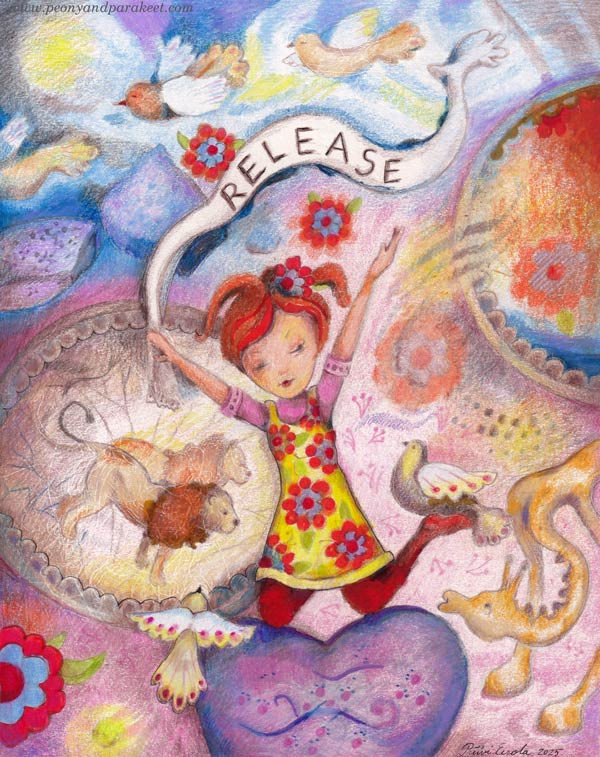
Here’s what I have learned about choosing the word!
Too Much Emotion, Too Little Impact
Some words appeal more to emotion, some to reason. Most often, I have chosen a word that has an emotional appeal. For example, “Imagination”, “Depth” or “Play“. There are plenty of these kinds of soft words, here are some common ones: “Joy”, “Courage”, “Inspire”, “Create”, “Focus”, “Nurture.”
These soft words that make your imagination run wild may seem like good choices, but they have this downside: when you’re busy working, your head is full of rational words. Emotional words don’t come to mind at that moment. This way, the practical connection to the word is missing.
My word for 2024 – “Integrate” – was a rather uninspiring word at first, but it became more and more inspiring over the course of the year. The idea was that even though I was doing a variety of art – drawing, painting and programming digital motion art – I could look for connections between different art forms so that I didn’t have to reinvent everything. I could also value more what I had created in previous years. This union of old and new worked out nicely, and with the word, I began to see my artistic career as a whole and not just an attempt to improve my artistry piece by piece.
The best thing about the word was that it didn’t describe the actual result but solved how to get there. So when I encountered problems, “Integrate” often offered at least a partial solution. That way the word came to mind repeatedly and helped me in situations when my inspiration was at its lowest.
Word That Changes Your Life
I think the best words are those that initiate change for the better. I have often chosen a word that is already familiar and doesn’t make me change anything. This year, my first candidate was “Elevate.” It sounded too soft, so I found a similar rational word “Upgrade.” But since I always try to improve my actions and the level of my art in general, I rejected “Upgrade” and chose “Release” instead.
To me, “Release” means letting go of what I’ve been holding in my heart and letting it come out. I want to give myself permission to be naive, naughty, brutal, overly cute, everything and anything, and start to blindly believe in my artistic vision. Release also means publishing what I’ve done openly and regularly and working with that in mind. Letting go and publishing is a bittersweet combination that really challenges me.
Release also means that I can let go of things if they hinder rather than help the cause.
Drawing the Word for 2025
Writing about the word is good, but I also wanted to process the word by drawing.
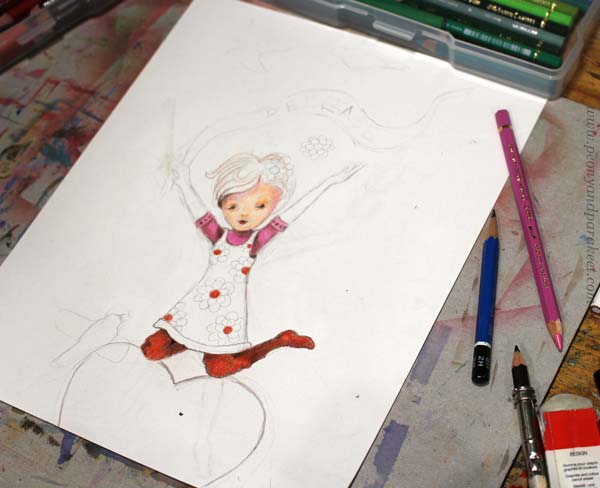
By drawing, you always find new dimensions. Even the hardest words become softer and create emotional connection.
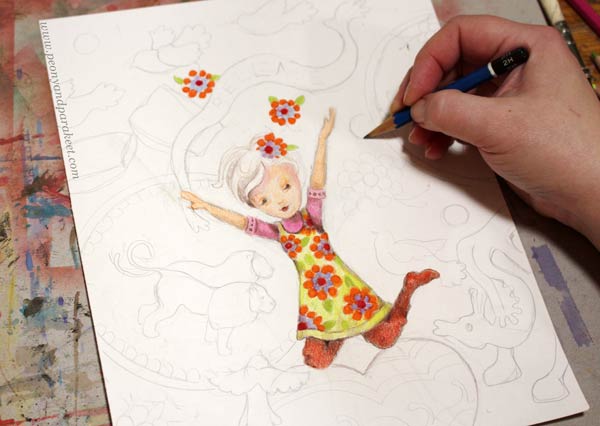
One thing leads to another. I love this way of drawing where the result remains a surprise for a long time.
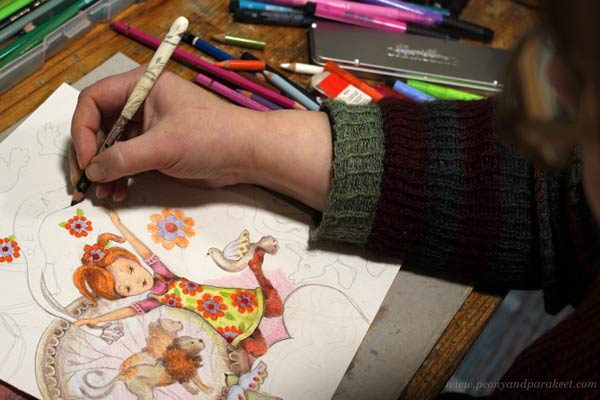
I combined colored pencils and markers here. I like the soft impression of colored pencils, but I used felt-tip pens in the highlights to intensify the colors.

When the drawing was half-finished I compared it to the little pieces I had drawn during the Christmas holiday.
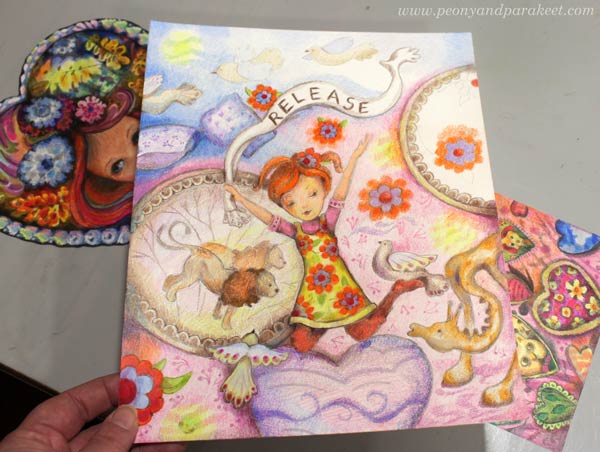
The colors still needs to be strengthened and details adjusted.
Finding the Connection with the Word
Even though this drawing isn’t very big, about letter size, there are a lot of details. I took many breaks and it took me about 3 days to finish the drawing. For the illustration that combines the right and the left brain, it’s important to find the connection between all the details and understand how they express the word.
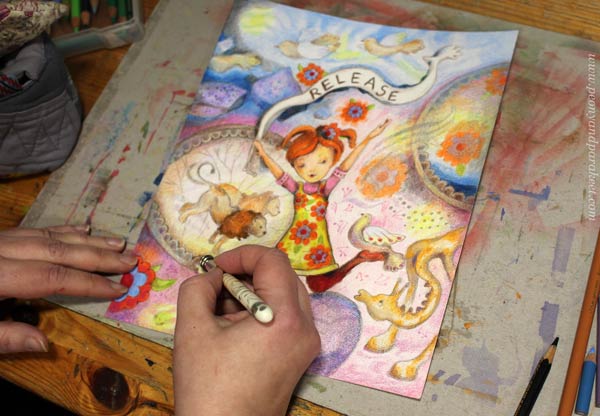
This drawing depicts my childhood in the 70s with plastic animals and daydreaming. The drawing feels revealing to me, although its style is playful.

Even if the picture feels a bit private, I want to share it with you: release, you know!
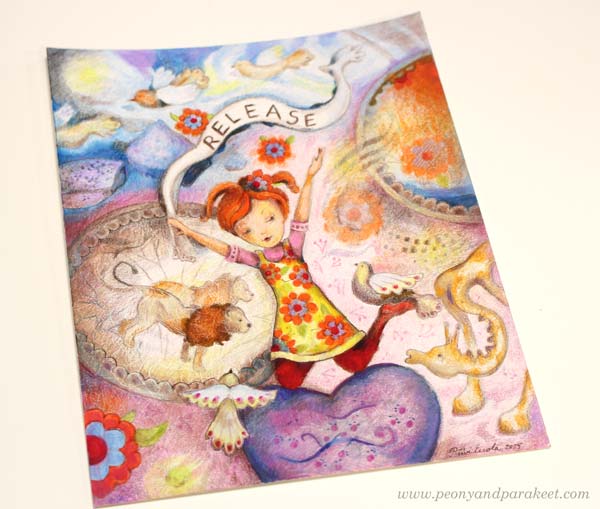
What’s your word for 2025?
Are you going to draw it?
Joyful Flowers with Watercolor Pencils – Watch the Video!
This week, I have a free video where I create these joyful flowers with watercolor pencils. These are inspired by fabric prints and are more motif-like than many of my colored pencil pieces. I love this kind of playing with style.

This is a small piece, just 8 x 8 inches. It’s colored freely with watercolor pencils on thick drawing paper.
Joyful Flowers – Watch the Video!
In the video, I talk about finding inspiration for art-making and tell stories about things that have affected my style. I just read abstract painter Darby Bannard‘s quote:
“Inspiration doesn’t follow style, it creates it.”
It made me want to share my thoughts about inspiration and style. I also wanted to create something colorful and cheerful that is not realistic, but more design-oriented. These joyful flowers were fun to make. After drawing the joyful flowers, I made something small to add to my boxes of joy. You can see that little flowery thing in the video too. Watch the video!
This video is a little longer than I usually post, but I personally like to watch long videos, and maybe you do too?
Joyful Coloring
My newest course Joyful Coloring teaches a color-oriented approach to watercolor pencils.
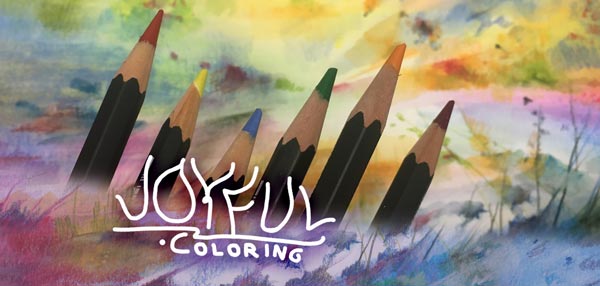
Start with blank paper and create freely with joy and sunshine! >> Buy here!
Magical Cat and Its Many Lives in Art
This week, I present a new cross-stitch pattern based on my drawings, and ponder about my word for the year: “integrate.”
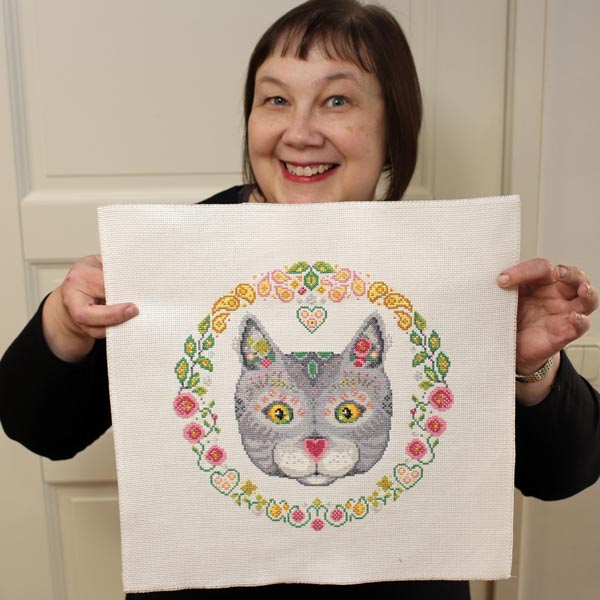
It’s finally time to release the cross-stitch pattern that you, my dear blog readers, voted for in April. The pattern is based on the cats drawn for the course Magical Inkdom.
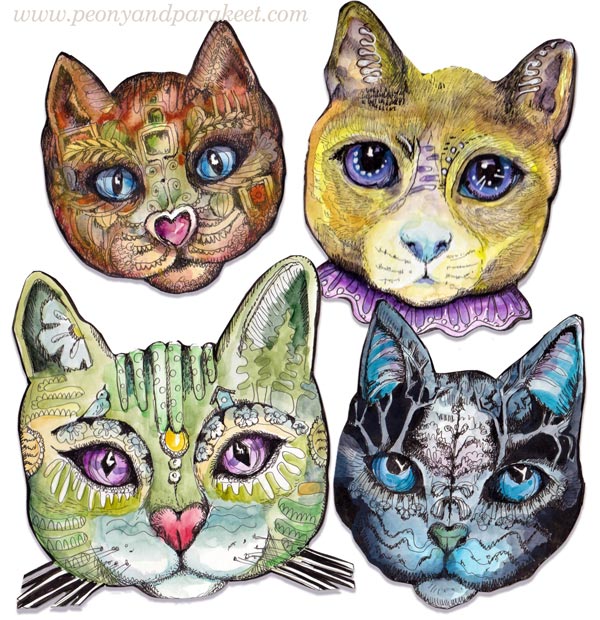
Magical Inkdom is one of my most popular courses, so no wonder so many suggested choosing a cat for the cross-stitch design.
Magical Cat Cross Stitch Pattern
The pattern is called Magical Cat. It features a soft and cute cat with sparkling eyes. I like to decorate, so I did that for the cat too. I have taken inspiration from fabrics and jewelry. The color scheme is sweet and happy, and gray serves as a good background for all the pinks, greens, and yellows.
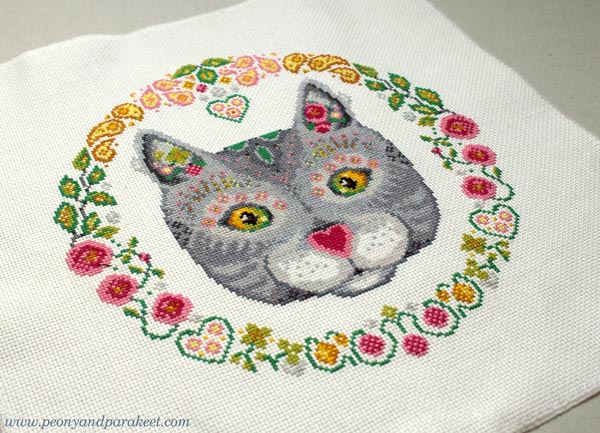
The pattern is now available for digital purchase in my little Etsy shop Needle and Peony. In addition, you need embroidery threads, suitable fabric for embroidery, and of course scissors and a needle. Information about thread colors is on the pattern page.
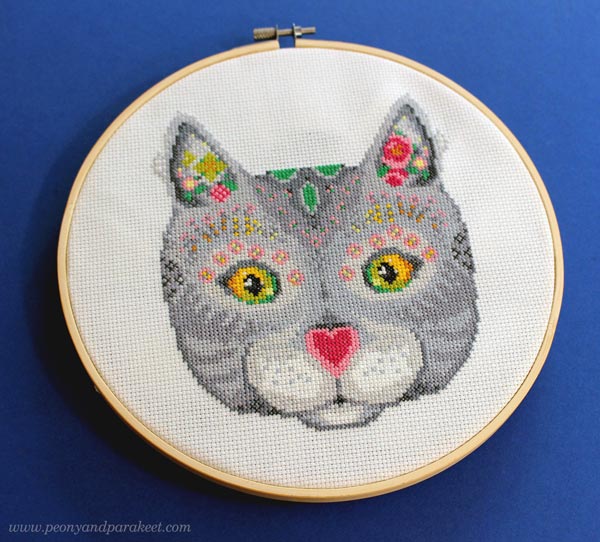
I have embroidered the design on 14ct aida fabric and it measures approximately 10 x 10 inches. You can embroider just the cat if you want a smaller model. And when it comes to cross stitches, choosing the higher density of the fabric makes the model smaller.
Integrate!
When taking photos of Magical Cat, I have been thinking about what I want to give to the world as an artist. My word this year has been “Integrate” and I have allowed myself to try all kinds of things as much as I could combine them with what I have created before.
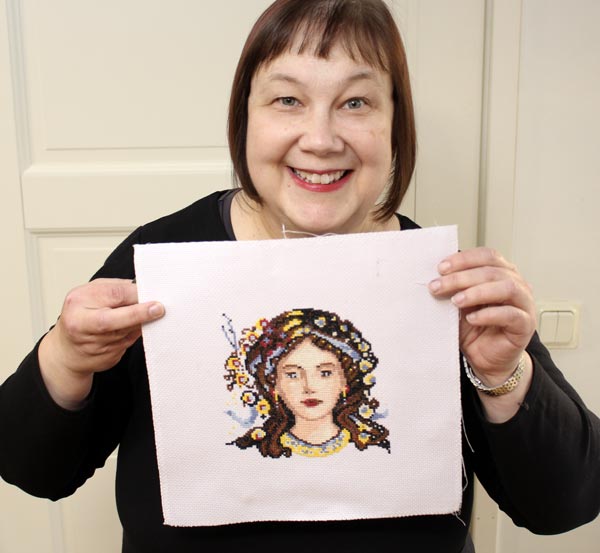
I’ve created many different things, for example, motion art based on my paintings.

And my latest course Joyful Coloring combines watercolor pencils and modular thinking, where the picture is built piece by piece.

Now, when I look back on the year, not only “integrate,” but also additional words come to mind.
Repeating Themes
One is “design,” because I’ve been using things that I learned in the industrial design degree.
The second is “techniques” because I have learned a lot of new ways to create.
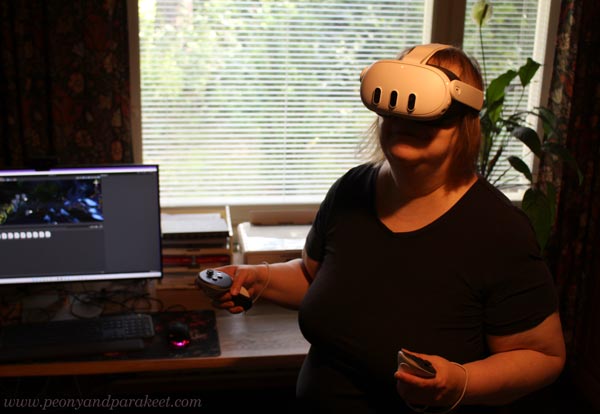
The third is maybe “confidence” because even though I’ve been in the discomfort zone many times, I’ve stubbornly convinced myself that I can do it all. That has led to new confidence – I can finish and publish all kinds of things and not just leave them as experiments. Finishing gives me a lot of satisfaction.
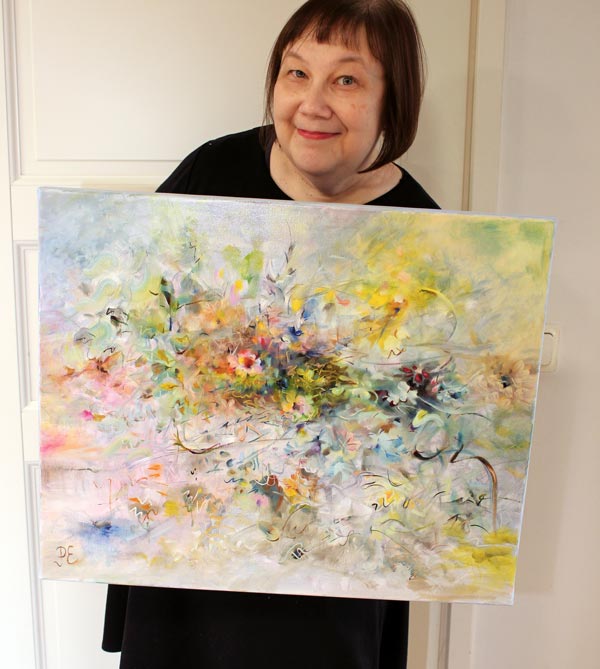
Purchase this painting from a Finnish online art store Taiko!
Maybe the fourth word is “joyful” because most of what I’ve done has brought me joy, even though it’s been hard work. I hope that the variety of projects that I have presented in this blog has brought joy to you too. My magical cat has had many lives indeed!
But today when I look at my results, I see them as scratching the surface in many directions. I want a new strategic word for next year. I haven’t decided on the word yet, but candidates are at least “elevate,” “expand” and “deepen.”
What do you think?
From Painting to Digital 3D Art – Part 2
September is the last month of the grant I received from The Finnish Cultural Foundation. It’s time to show you the final virtual reality artwork and share more about my journey from painting to creating digital 3D art.
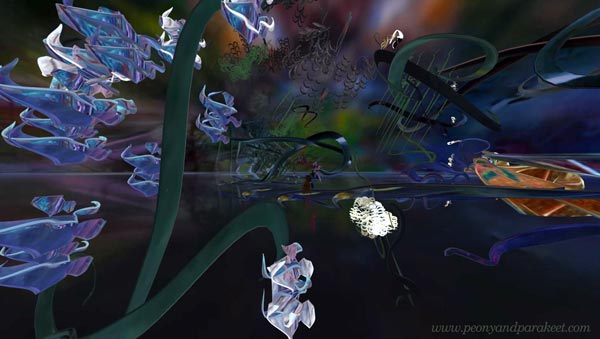
This week’s video is a sequel to the video “From Painting to Digital 3D Art” which was published in April this year.
Finished Virtual Reality Artwork – Watch the video!
In this second video, you continue to see how I transferred the visual and expressive language of my paintings into a 3-dimensional digital format. All this includes adding movement, sounds, and interaction. It’s a pity that you can’t experience my VR artwork with virtual glasses and hand controllers, but I have made all kinds of recordings to deliver the experience at least partly.
I hope you enjoy this video that not only presents the VR artwork called “Unknown Land,” but also talks about painting and developing a stronger artistic vision.
This is one of the biggest projects that I have had, and it feels sad that it’s now coming to an end. I seek opportunities to display my virtual reality artwork, and hope to have a private exhibition in the near future that has both my paintings and digital motion art.
Integrate!
My word for this year has been “Integrate.” As I said in the video: I will continue to draw, paint, model, code, and compose. One activity doesn’t exclude another. I hope you will continue following my journey no matter what I create, and I hope to inspire you in one way or another. In art, we are always heading to an unknown land – you never know what comes up next and how it will change your life! And while we go to new areas, it’s also good to integrate – to save and not abandon – everything we have created so far.